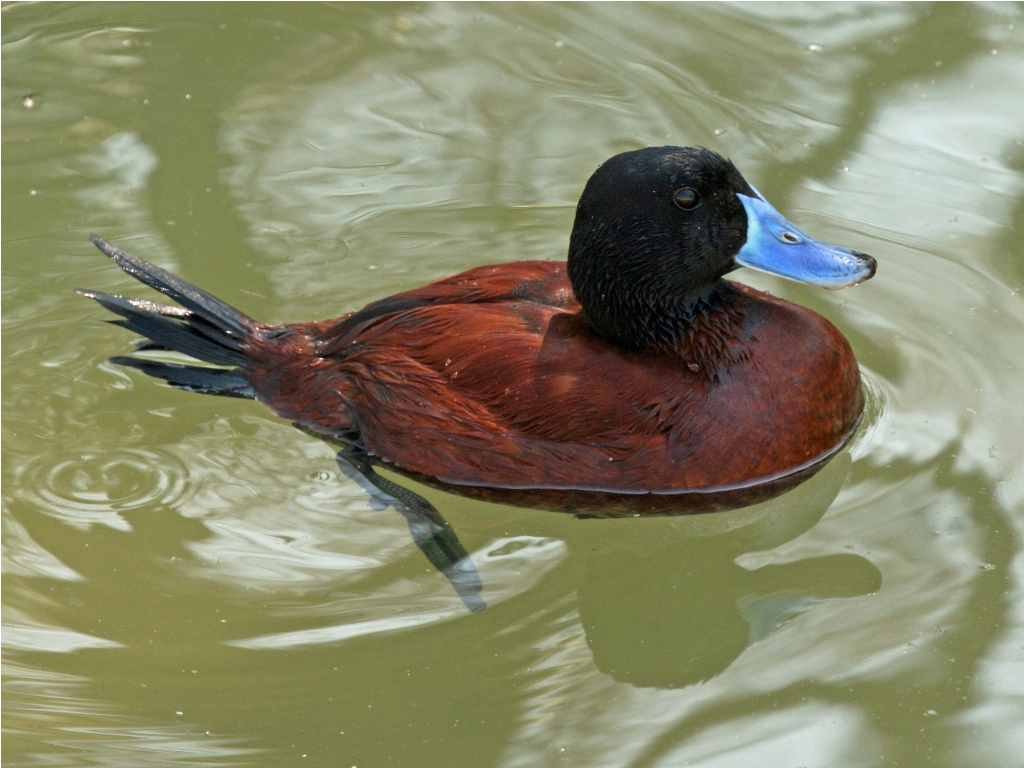
Lake duck, or Argentine blue-bill, or Argentine lake duck, or Argentineruddy duck (Oxyura vittata)
Phylum —chordata
Class — aves
Order — anseriformes
Family — anatidae
Genus –oxyura
Appearance
The lake duck grows to 36–46 centimeters (14–18 in). Females weigh 510–700 grams (18–25 oz) and males 600–850 grams (21–30 oz). Males can be distinguished from Andean duck (Oxyura ferruginea), a similar species, by being smaller and having a flatter head.
Habitat
The lake duck is a partially migratory species. It lives in bodies of freshwater with large amounts of vegetation, such as wetlands and lakes. It is very widespread, naturally occurring in Argentina, Brazil, Chile, Paraguay, and Uruguay, and having been introduced to Antarctica and the Falkland Islands.
Diet
Little is known about the lake duck's diet, but it is believed to consist of small invertebrates, seeds, and plant remains.
Reproduction
The breeding season varies between countries, occurring from October to January in Argentina.
Apparently, ducks are polygamous. The current behavior of males resembles that of the blue-billed duck. Nests are built in above-water vegetation — this is a small, almost flat construction. In a clutch there are only 3-5 eggs measuring 65×47 mm, weighing 85 grams. There were also larger clutches — 6-12 eggs, laid, apparently, by several females. The duration of incubation is unknown. Only the female incubates and leads the chicks, which are soon left unattended.
Incaptivity
The lifespan of this species is not exactly calculated, but according to some data Argentine blue-bill live long enough.
In captivity, they are not practically kept, they are supposed to be seldom seen in the zoo.In general, the species has not yet been fully studied even at the level of habitat in the wild, not to mention artificial breeding.
 Russian
Russian
 English
English
























